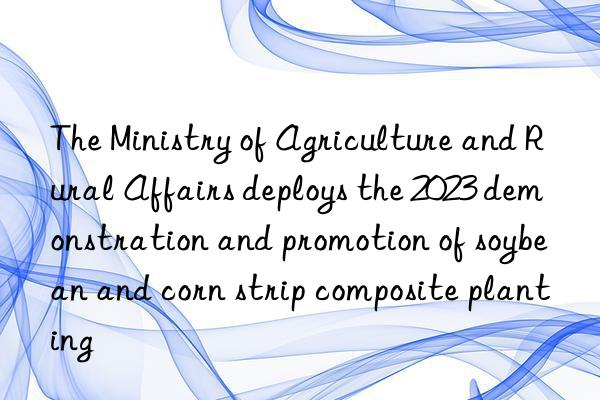
According to the website of the Ministry of Agriculture and Rural Affairs, before and after the "Grain Rain", plant melons and beans. The belt-shaped compound planting of soybeans and corns has been carried out from south to north, which is a critical period for implementing the demonstration and promotion area and improving the quality of sowing. On April 19, the Ministry of Agriculture and Rural Affairs held a national soybean-corn strip compound planting training meeting in Dazhou City, Sichuan Province, to observe the demonstration site of strip compound planting in Quxian County, exchange work progress, hold technical training, analyze difficult problems, and deploy this year's demonstration and promotion work .
The meeting pointed out that the development of soybean-corn belt composite planting is an important way to break the constraints of arable land resources and tap the potential to increase soybean production capacity. Last year was the first year of large-scale demonstration and promotion, covering an area of more than 15 million mu. A batch of suitable varieties were preliminarily selected, a batch of technical models were integrated, a batch of special equipment was equipped, and a group of planting experts were trained. Most of the fields The goal of "basically no reduction in corn production and one more season of beans" was achieved, and the demonstration task was successfully completed.
The meeting emphasized that this year's belt compound planting demonstration area will be further expanded and the area will be further expanded, with heavier tasks and higher requirements. In view of problems such as mismatched varieties, unsuitable agricultural machinery, and inadequate technology in some areas, it is necessary to focus on key issues, grasp key links, break the bottleneck of constraints, and work together to promote the implementation of strip compound planting tasks. One is to grasp the implementation of the area. Supervise and guide the implementation of tasks, regularly schedule work progress, and promote the implementation of capital technology. The second is to focus on variety screening. Targeted promotion of a number of suitable varieties on a county-by-county basis, organization of joint research on improved varieties, selection and promotion of suitable corn and soybean varieties. The third is to grasp the matching of machinery and tools. Strengthen the tracking and scheduling of machinery and tools, ensure the double guarantee of the quantity and quality of agricultural machinery, carry out operator training, and comprehensively improve the operation level. The fourth is to focus on typical demonstrations. Relying on green, high-yield and high-efficiency projects, each demonstration county establishes a high-standard demonstration area to play a leading role in demonstration, show it to farmers, and lead them to work. The fifth is to focus on guidance services. Organize experts to pack up tablets to stay on site, achieve "one county, one team, one township, one expert", carry out whole-process guidance, do a good job in technical training, and implement key measures. The sixth is to grasp publicity and guidance. Excavate typical cases and advanced figures emerging from various places, publicize and report good experiences and practices, and create a good atmosphere.
Representatives from agricultural and rural departments of 17 provinces undertaking demonstration and extension tasks and some key counties, as well as expert members of strip compound planting attended the meeting, 7 provinces and some planting entities made exchanges and speeches, and 3 experts gave special training.



 微信扫一扫打赏
微信扫一扫打赏
